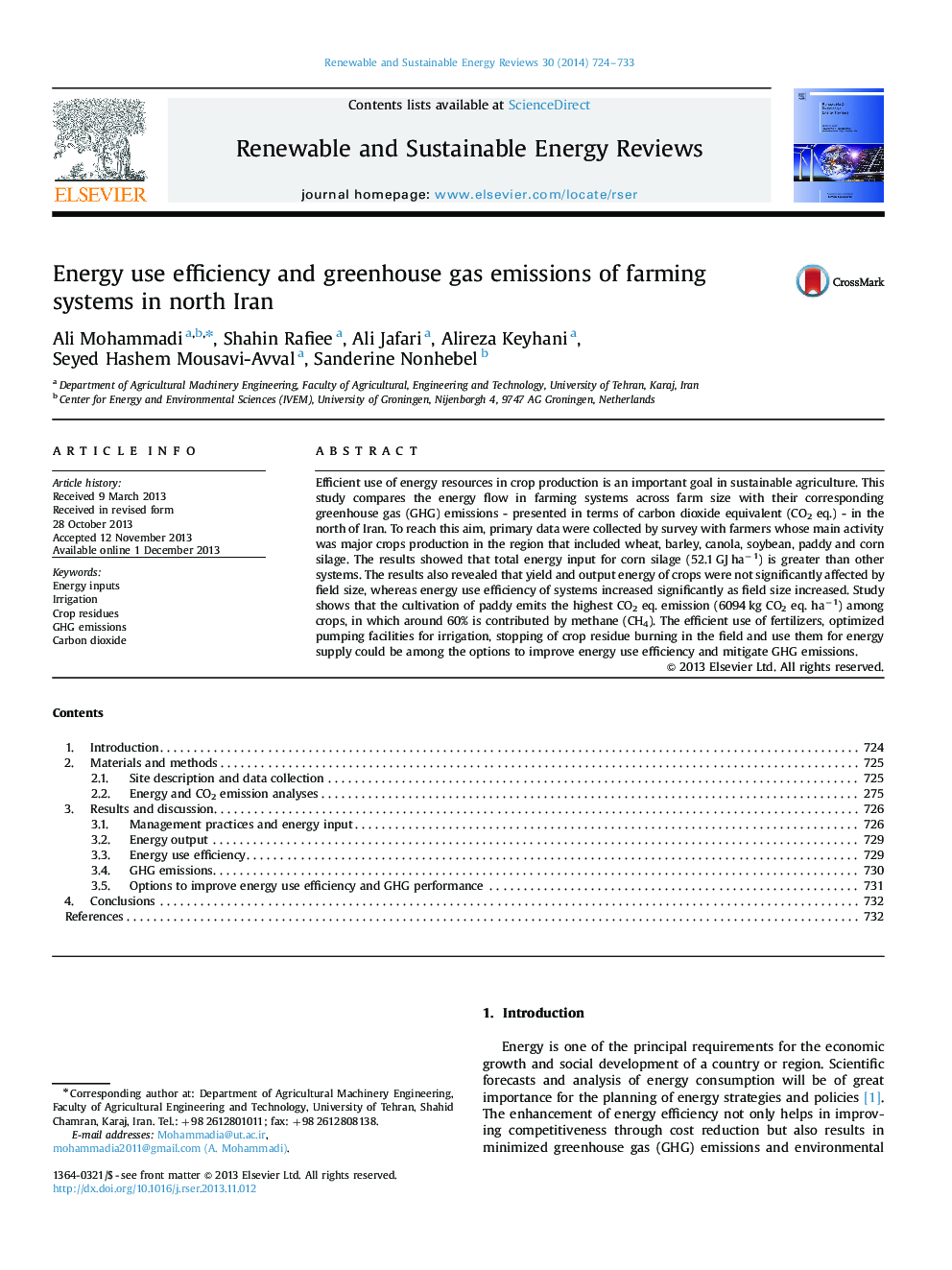| Article ID | Journal | Published Year | Pages | File Type |
|---|---|---|---|---|
| 8120709 | Renewable and Sustainable Energy Reviews | 2014 | 10 Pages |
Abstract
Efficient use of energy resources in crop production is an important goal in sustainable agriculture. This study compares the energy flow in farming systems across farm size with their corresponding greenhouse gas (GHG) emissions - presented in terms of carbon dioxide equivalent (CO2 eq.) - in the north of Iran. To reach this aim, primary data were collected by survey with farmers whose main activity was major crops production in the region that included wheat, barley, canola, soybean, paddy and corn silage. The results showed that total energy input for corn silage (52.1Â GJÂ haâ1) is greater than other systems. The results also revealed that yield and output energy of crops were not significantly affected by field size, whereas energy use efficiency of systems increased significantly as field size increased. Study shows that the cultivation of paddy emits the highest CO2 eq. emission (6094Â kg CO2 eq. haâ1) among crops, in which around 60% is contributed by methane (CH4). The efficient use of fertilizers, optimized pumping facilities for irrigation, stopping of crop residue burning in the field and use them for energy supply could be among the options to improve energy use efficiency and mitigate GHG emissions.
Related Topics
Physical Sciences and Engineering
Energy
Renewable Energy, Sustainability and the Environment
Authors
Ali Mohammadi, Shahin Rafiee, Ali Jafari, Alireza Keyhani, Seyed Hashem Mousavi-Avval, Sanderine Nonhebel,
